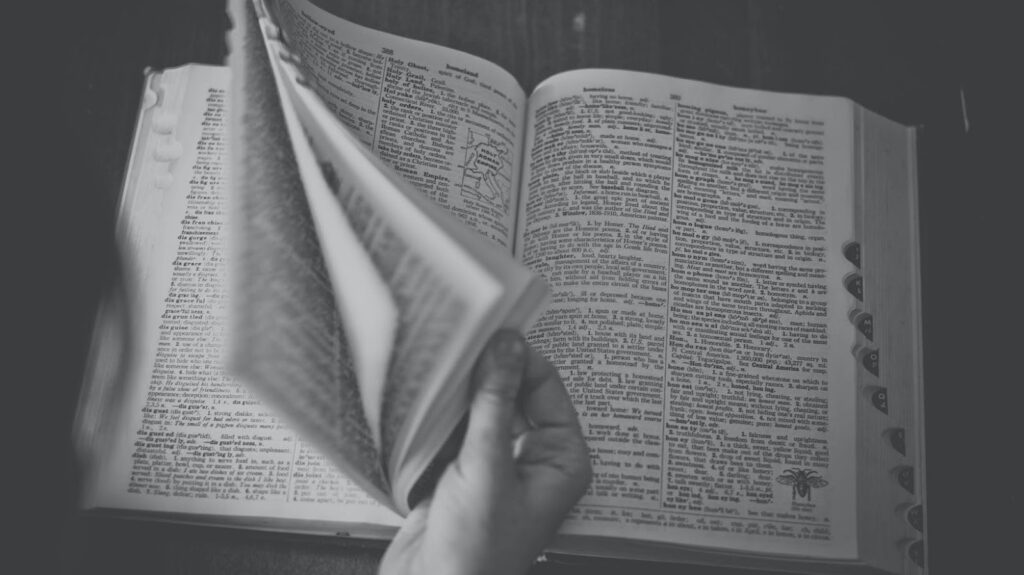According to the Passage, what Distinguishes Johnson’s Dictionary from Others?
Hey there! Have you ever come across a passage and wondered what it really means? Well, you’re not alone! Understanding a passage can sometimes feel like deciphering a secret code. But fear not, because in this article, I’ll be diving deep into the concept of “according to the passage” and unraveling its mysteries.
In the world of reading and analysis, “according to the passage” plays a crucial role in understanding the author’s intent and extracting valuable information. It’s like having a roadmap that guides us through the text, helping us make sense of the author’s ideas. So, if you’ve ever found yourself scratching your head when encountering this phrase, stick around because I’ll be breaking it down for you.
Key points in the Passage
Within the passage lie a multitude of key points that support and expand upon the main idea. These points are crucial for constructing a comprehensive understanding of the author’s message. “According to the passage,” these key points can take various forms, including:
- Facts and Statistics: The passage may present statistical data or factual information to support its argument. These facts lend credibility to the author’s intent, providing a solid foundation upon which the reader can evaluate the validity of the main idea.
- Examples and Illustrations: Through the use of examples and illustrations, the passage helps to concretize abstract concepts and make them more relatable. These examples provide real-life scenarios or specific instances that demonstrate the application or relevance of the main idea.
- Supporting Evidence: To validate the main idea, the passage may reference external sources or expert opinions. These pieces of supporting evidence come from reputable sources, adding weight and credibility to the author’s argument. “According to the passage,” this evidence allows readers to evaluate the main idea from multiple perspectives and consider its broader implications.
- Counterarguments and Rebuttals: In some cases, the passage may raise counterarguments to the main idea, acknowledging alternative viewpoints and potentially addressing any potential criticisms. By addressing these counterarguments, the passage demonstrates a well-rounded understanding of the topic and strengthens the overall argument.
By honing in on these key points within the passage, readers have the opportunity to dissect and analyze the author’s intention, extracting valuable insights and forming their own conclusions. “According to the passage,” these details play a crucial role in unraveling the underlying meaning and significance of the text.
Analysis of The Passage
As I delve deeper into the passage, it becomes crucial to interpret its content accurately. This involves breaking down the author’s ideas, identifying the main message, and understanding the underlying themes. When interpreting the passage, I consider the tone, language, and overall structure to uncover the author’s perspective and intent. This helps me grasp the central theme and navigate through the deeper meaning of the text.
To interpret the passage effectively, I pay close attention to key words and phrases that provide clues about the author’s viewpoint and purpose. I analyze the context surrounding these words and determine their significance in relation to the overall message. By examining sentence structure and patterns, I can also discern the author’s emphasis on certain ideas or arguments.
I find it helpful to ask myself questions like, “What is the author trying to convey here?” and “Why did the author choose this particular way to express their thoughts?” By doing so, I can better understand the author’s perspective and engage in a meaningful analysis of the passage.
Evaluation of the Arguments in the Passage
In addition to interpreting the passage, I thoroughly evaluate the arguments presented by the author. This involves critically analyzing their reasoning, examining the evidence provided, and assessing the validity of their claims. By evaluating the arguments, I can determine the strength and effectiveness of the author’s position, as well as identify any potential weaknesses or flaws.
To evaluate the arguments, I consider the supporting evidence provided within the passage. This may include facts, statistics, examples, or expert opinions. I examine the logic behind the author’s reasoning and assess whether it is sound and logical. I also look out for any counterarguments or alternative viewpoints the author presents and evaluate how they are addressed.
By engaging in a comprehensive evaluation of the arguments in the passage, I am able to form a well-rounded understanding of the author’s position and the validity of their claims. This critical assessment allows me to further analyze the passage and draw my own informed conclusions.

